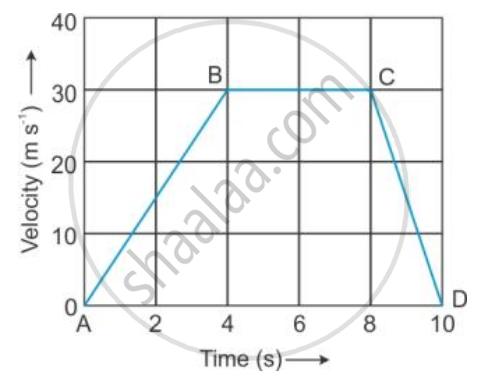Advertisements
Advertisements
प्रश्न
A body projected vertically up with a velocity of 10 m/s reaches a height of 20 m. If it is projected with a velocity of 20 m/s, then the maximum height reached by the body is:
विकल्प
20 m
10 m
80 m
40 m
उत्तर
80 m
Explanation:
Initial velocity = u = 10 m/s
Height = Distance = S = 20 m
At highest point, Final velocity = v = 0
Acceleration = (a) = ?
Case − I
v2 − u2 = 2aS
(0)2 − (10)2 = 2a (20)
a = `-100/40` = −2.5 ms−2
Case – II
u = 20 m/s; v = 0
a = −2.5 ms−2; S = h /
v2 − u2 = 2aS
(0)2 − (20)2 = 2(−2.5)h
h = `400/5` = 80 m
APPEARS IN
संबंधित प्रश्न
Arrange the following speed in increasing order (keeping the least speed first):
A bicycle moving with a speed of 200 m/min.
A motorcyclist drives from place A to B with a uniform speed of 30 km h-1 and returns from place B to A with a uniform speed of 20 km h-1. Find his average speed.
A motorcyclist starts from rest and reaches a speed of 6 m/s after travelling with uniform acceleration for 3 s. What is his acceleration ?
Give one example of a motion where an object does not change its speed but its direction of motion changes continuously.
Which of the following statement is correct regarding velocity and speed of a moving body?
A car moving on a straight path covers a distance of 1 km due east in 100 s. What is velocity of the car?
The velocity-time graph of a moving body is given below in Figure

Total displacement.
Write down the type of motion of a body along with the A – O – B of the following distance – time graph.

What are the uses of equations of motion?
Derive th e equation of motion.
S = ut+ `1/2` at2,
Where the symbols have their usual meanings
